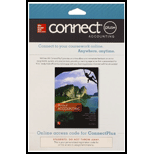
a.
Compute the avoidable cost per unit of making the bike frames, based on the results whether Company CB should outsource the bike frames.
a.
Explanation of Solution
Special order decisions: Special order decisions include circumstances in which the board must choose whether to acknowledge abnormal customer orders. These requests or orders normally necessitate special dispensation or include a demand for lesser price.
Decision making: It is a vital capacity in the management, since decision making is identified with issue, a compelling decision making accomplishes the preferred objectives or goals by taking care of such issues.
Sunk cost: A sunk cost, otherwise called a stranded cost, is a cost that has just happened and cannot be transformed or evaded. It is also called as a cost that has just been paid and cannot be discounted or lessened.
Opportunity cost: An opportunity cost is the financial idea of potential profits that an organization surrenders by making an elective move.
Determine the total avoidable costs:
The facility-sustaining costs and stock holding costs about 20% remain the equivalent irrespective of whether frames are obtained or produced. Because these costs do not contrast between the alternatives, they are not avoidable. The
Therefore the total avoidable cost is $2,122,000.
Determine the avoidable cost per unit:
Therefore the avoidable cost per unit is $98.60.
Determine the increase in income:
Outsourcing will reduce the cost and increases the income.
Therefore the increase in income is $272,000.
From the results obtained above, the avoidable cost of $98.60 is greater than the purchase cost of $85. Hence, Company CB should outsource the frames. Outsourcing would diminish cost and increments productivity by $272,000.
Therefore, Company CB should outsource the bike frames.
b.
The avoidable cost per unit of produce the bike frames using new equipment and old equipment and the impact on profitability if the frames are made using old equipment versus the new equipment.
b.
Explanation of Solution
Determine the total avoidable costs of old equipment:
Therefore the total avoidable cost of old equipment is $870,000.
Determine the unit level labour costs:
Determine the depreciation cost:
Therefore the depreciation cost is $210,000.
Determine the total avoidable costs of new equipment:
Therefore the total avoidable cost of new equipment is $530,000.
Determine the cost per unit of old equipment:
Therefore the cost per unit of old equipment is $43.50.
Determine the cost per unit of new equipment:
Therefore the cost per unit of new equipment is $26.50.
Determine the avoidable costs of using the old equipment:
Therefore the avoidable cost of using the old equipment is $340,000.
From the results obtained above, the cost of depreciation of the new equipment is certifiably not a sunk cost for this situation on the grounds that the new equipment has not been bought. The avoidable cost of utilizing the current equipment is $340,000 greater than that of utilizing the new equipment. Thus, replacing the current equipment with the new equipment will build the organization's income by $340,000.
Therefore Company CB should replace the current equipment.
c.
Whether Company CB should purchase the new equipment or outsource the bike frame and the impact on profitability between two alternatives.
c.
Explanation of Solution
Determine the total avoidable costs between two alternatives (old and new equipment):
Therefore the total avoidable cost between two alternatives is $1,632,000.
Determine the cost per unit between two alternatives (old and new equipment):
Therefore the cost per unit of old equipment is $81.60.
Determine the difference of cost per unit between two alternatives:
Therefore the difference of cost per unit between two alternatives is $3.40.
Determine the increase in profitability:
Therefore the increase in profitability is $68,000.
From the results obtained above, the cost per unit is $81.60, the savings from replacing the old equipment is $3.40 per frame and the increase in profitability is $68,000. Hence the old equipment should be replaced.
Therefore Company CB should replace the old equipment.
d.
The qualitative factors Company CB should consider before making a decision to outsource and the ways in which the company minimize the risk of establishing supplier relationship.
d.
Explanation of Solution
The qualitative factors Company CB should consider before making a decision to outsource and the ways in which the company minimizes the risk of establishing supplier relationship is as follows:
Before focusing on the outsourcing decision, Company CB must think about the capacity of the provider or suppliers to deliver the frames as per the organization's quality principles. Likewise, Company CB must guarantee itself that the frames will be conveyed on a convenient premise. By outsourcing, Company CB is dropping the advantages of vertical integration.
The organization is reliant on the provider's enactment. The loss of control should be weighed in contradiction of the advantages of cost reduction. Company CB can shield itself from problematic providers by keeping up a rundown of licensed providers. Company CB should furnish these providers with hikes or incentives for providing exceptional services, for example, amount buys and quick invoice payment so as to increase favoured customer standing.
Want to see more full solutions like this?
Chapter 13 Solutions
SURVEY OF ACCOUNTING-ACCESS

 AccountingAccountingISBN:9781337272094Author:WARREN, Carl S., Reeve, James M., Duchac, Jonathan E.Publisher:Cengage Learning,
AccountingAccountingISBN:9781337272094Author:WARREN, Carl S., Reeve, James M., Duchac, Jonathan E.Publisher:Cengage Learning, Accounting Information SystemsAccountingISBN:9781337619202Author:Hall, James A.Publisher:Cengage Learning,
Accounting Information SystemsAccountingISBN:9781337619202Author:Hall, James A.Publisher:Cengage Learning, Horngren's Cost Accounting: A Managerial Emphasis...AccountingISBN:9780134475585Author:Srikant M. Datar, Madhav V. RajanPublisher:PEARSON
Horngren's Cost Accounting: A Managerial Emphasis...AccountingISBN:9780134475585Author:Srikant M. Datar, Madhav V. RajanPublisher:PEARSON Intermediate AccountingAccountingISBN:9781259722660Author:J. David Spiceland, Mark W. Nelson, Wayne M ThomasPublisher:McGraw-Hill Education
Intermediate AccountingAccountingISBN:9781259722660Author:J. David Spiceland, Mark W. Nelson, Wayne M ThomasPublisher:McGraw-Hill Education Financial and Managerial AccountingAccountingISBN:9781259726705Author:John J Wild, Ken W. Shaw, Barbara Chiappetta Fundamental Accounting PrinciplesPublisher:McGraw-Hill Education
Financial and Managerial AccountingAccountingISBN:9781259726705Author:John J Wild, Ken W. Shaw, Barbara Chiappetta Fundamental Accounting PrinciplesPublisher:McGraw-Hill Education





